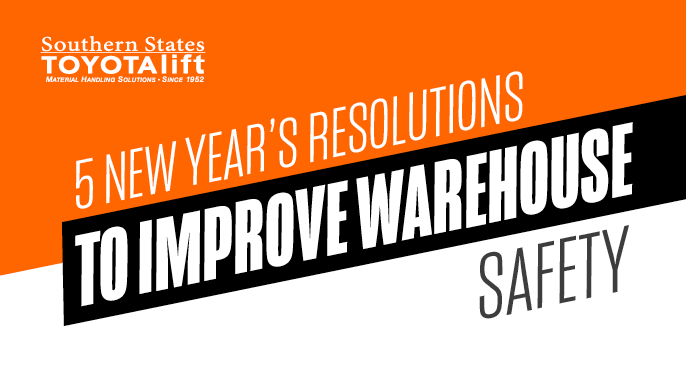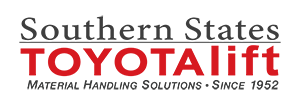
The New Year is here and it’s time to make your personal resolutions for the New Year - why not create similar goals for improving your workspace? Warehouse safety is paramount for worker satisfaction and retention as well as business productivity and profitability. No matter how long you’ve gone without an incident, there’s always room for improvement. Consider making these resolutions to improve the safety of your warehouse in the New Year.
1. Ample Warehouse Lighting
OSHA puts forth minimum required lighting standards in rule 1915.82 for a variety of workspaces, including warehouses. While the minimum required standard is 10 foot-candles of light, improved lighting can help minimize risks to workers and products in warehouses. Dim, poorly lit spaces can increase risks of trips and falls, damages to product, and risk of incidents with forklifts. By increasing your lighting to meet standards and exceed them if your warehouse space requires a higher lighting standard, you can reduce risks throughout your business operation.
2. Forklift Safety Lights and Alarms
Implementing aftermarket forklift attachments such as blue back up lights and back up alarms can help operators and pedestrians stay safer in your warehouse. Operational alarms and back up alarms increase awareness of approaching forklifts in your warehouse. The popular blue light attachments serve as an alternative to alarms that reduces distractions due to constant noise from alarms that can be overwhelming. Blue lights help alert operators and pedestrians to approaching equipment before it arrives, even alerting to approaching forklifts from around corners.
3. Operator Safety Training
When is the last time your operators took a safety training course? Regular training and recertification can ensure bad habits are limited and the latest best practices are implemented throughout your operation. Use the New Year as an opportunity to make sure your full crew of forklift operators is on the same page with regards to daily walkarounds, safe operation, and how to respond in case of a collision or other incident.
4. Your Company Safety Culture
Are pre-shift equipment inspections championed throughout your staff? Do you train non-operators on safe practices around forklifts? Is your anti-slip tread tape throughout your warehouse in good condition? Creating a robust safety culture is essential for reducing risks throughout your business. The best way to drive the adoption of a culture of safety with your staff is by championing and demonstrating it each and every day. Whether that means auditing pre-shift equipment inspections or replacing outdated racking before it becomes an issue, “walking the talk” is key.
5. Proper Forklift Maintenance
How long are your forklift service intervals? While it can be tempting to try and squeeze a bit more time out of your equipment before your next round of planned service, doing so puts your operators and other employees at increased risk of injury due to equipment failure. Instead, see how increasing or upgrading your maintenance plan might improve your fleet’s utilization rate in the New Year. By reducing downtime and optimizing performance, your equipment can contribute to improved throughput and reduce fuel consumption.
A New Year presents the perfect opportunity to overhaul your business practices and improve the safety of your warehouse. These are just suggestions that can help solve common safety issues in many warehouse operations. Ultimately, you know your business best and can determine how best to overcome your unique challenges.
Further Reading:
Top 10 OSHA Violations of 2018
How to Get Your Forklift Operator Certification
5 Specialized Forklift Attachments for Improved Warehouse Efficiency
